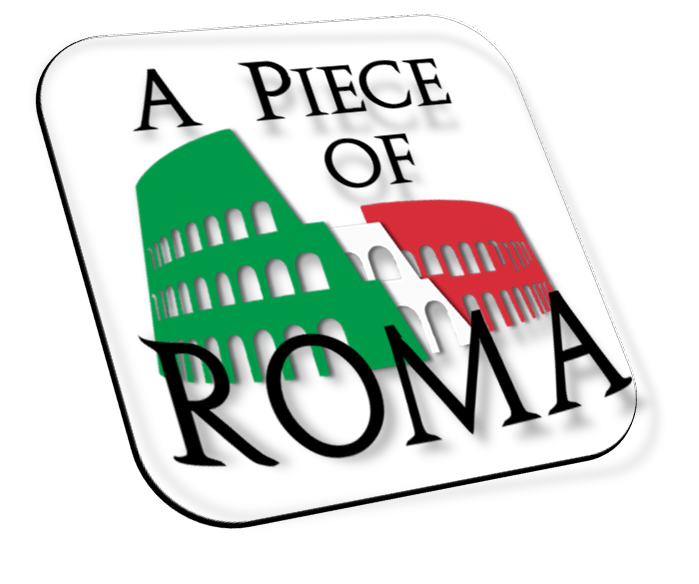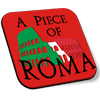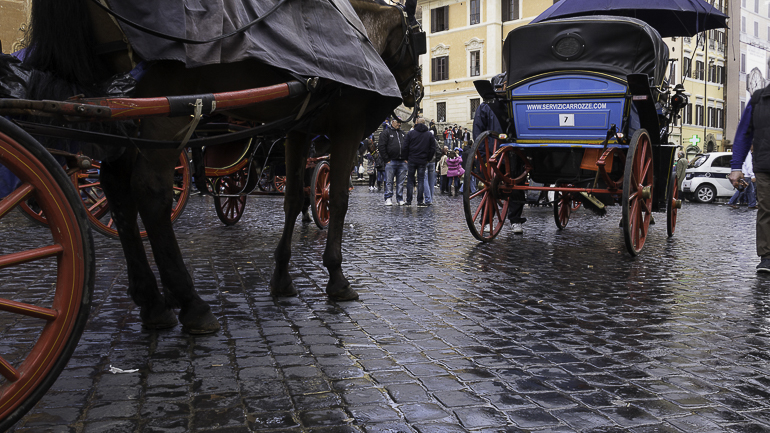Travertine is a limestone that forms from chemical precipitation of calcium carbonate found (as CaHCO2) in supersaturated alkaline waters originated in the Appenines mountains. Since carbonate solubility decreases as temperature and pressure decrease or PH increases (water Co2 degassation) or pCO2 (photosynthesis), precipitation of carbonate from these waters is induced. The originated mineral deposit is characterized by a porous structure and the presence of numerous voids due to plants that deposited along with the mineralization in the sedimentary basin.
One of the most well-known travertine deposit in the world is the Travertino Romano, that has been used to build some among the most famous monuments of the Roman epoch (Anfiteatro Flavio (Colosseo), Teatro Marcello, Terme di Diocleziano, etc.) and monuments symbols of the Roman Renaissance (San Pietro-Vatican……). Even in modern times, travertino has been the primary choice as material for prestigious buildings, such as the Olympic stadium, etc… In a sense, travertino is the material that most represents the City of Rome, having been extensively used in the construction and development of the city.
The name of Travertino comes from latin “lapis tiburtus”, meaning ‘rock of the city of Tivoli’, as in that area is found one of the largest quarries. As noted by the Greek geographer Strabone (58 BC -23 AC), the presence of the Aniene river, close to one of the oldest travertine quarry in the area (‘il Barco’), and the existence of a good road system, facilitated the transportation of this material to the city of Rome, contributing to its widespread as construction material.
In the II century BC, travertine became the privileged construction material, as the notorious Roman architect Vitruvius included it in the Roman Architecture standards. Afterwards, during the empire of Augustus, travertine was elected as a noble material, being used for the most important monuments of the epoch (Colosseum, Arch of Galliano). The porous quality of travertine, ill-suited for more detailed art work, perfectly matched the Roman principle of practicality.
During the middle ages, the extraction of travertine came to a holt, as it became common to reuse the parts of the monuments to produce lime and use it as construction material.
Around 1450, the papacy decided to revive the prestige of ancient Rome, building monuments modeled after Imperial Rome and therefore promoting again the use of travertine as building material. Under Sistus IV’s papacy, every building in the city of Rome was made of travertine, giving the landscape monochromatic character. The most representing building of that time is the St Mary of People church.
The revival of travertino made possible to reopen the old quarries and rebuild the mining economy of the area.
During the Renaissance and the Baroque, travertine became popular again, being included in the most prestigious art work of the time (piazza del popolo, etc..).
Nowadays, travertino is a symbol of made in Italy, being the material chosen for world-famous architecture works, such as Paul Getty Museum in Los Angeles, Bank of China, University of Copenhagen, etc.
Geology
The Tivoli-Guidonia plane, known for sulphurous mineral waters (Acque Albule), is a deposition basin, part of the crustal extensional area of the Appenines mountains in the Lazio region. The basin is limited by the Cornicolani mountain range in the northern side, Lucretili mountains in the east, the Aniene river in the south and marine deposits from Pleistocene era in the West. About 115 K years ago, the area started subsidizing along a NS oriented system of normal faults and an intense hydrothermal activity took place, leading to the 80 m deposit of travertino. The hydrothermal action is still present, as sulfuric springs throughout the area are common.
During the roman epoch, travertino was harvested on the surface, above the water level. However, during the 30’s, the extraction of travertino became more intense, along with the use of geothermal waters, leading to important changes of the local geomorphology. Today the cultivation of travertine is closely monitored to reduce the environmental impact of the mining activities.




